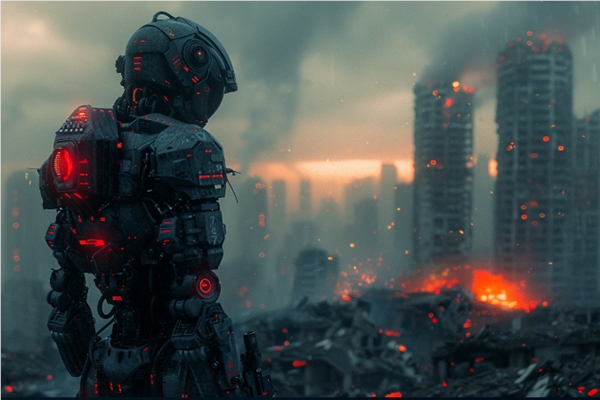When AIGC technology showcased its capabilities at the "Global AI Film Marathon," the AI short film "Ocean Warfare" sparked copyright disputes due to its similarities with "Dune." This debate not only raised questions about the originality of AI-generated content but also highlighted potential copyright issues involved in AI creation processes.

Image Source Note: The image was generated by AI, provided by the image licensing service Midjourney
"Ocean Warfare" is not an isolated case. In the field of AI video, some creators use AI technology to transform existing films or live-action videos into different styles. This "imitation" technique, while maintaining the precision of video expression, has also sparked discussions about originality. Some argue that this approach may infringe on the copyright of the original work, especially in a commercial context where such disputes are more sensitive.
The "ancient costume female incident" by 360 further highlighted copyright issues in the field of AI-generated images. 360's use of the LoRA model to generate images led to disputes, with differing legal opinions. Some precedents emphasize the "identifiability" of portrait rights, while in the United States, copyright protection for AI works is stricter.
In the early stages of AI video generation, creators employed various methods, including disassembling live-action videos and redrawing them, as well as using 3D modeling followed by AI to generate images with consistent styles. These methods, to some extent, circumvented issues of character consistency but also sparked discussions about creative and setting appropriation.
The copyright disputes in AI creation are essentially a re-evaluation of the value of human labor. Creators are not only concerned about the originality of their works but also whether their labor can receive reasonable compensation. From the Hollywood strike to Billy Joel's AI video, we have seen different applications of AI technology in artistic creation and the complex attitudes of artists towards AI.
As AI technology advances, how to define and protect human labor in AI creation has become an urgent issue. From the Beijing International Film Festival to Pixar's animation production, we see the industry's cautious approach to AI applications and calls to maintain the subjectivity of human artists.
In this new era where AI and human artists coexist, we need to continuously explore and discuss to find a path that not only protects originality but also fully leverages the potential of AI. This is not only a legal and technical issue but also a profound reflection on human wisdom and creativity.









